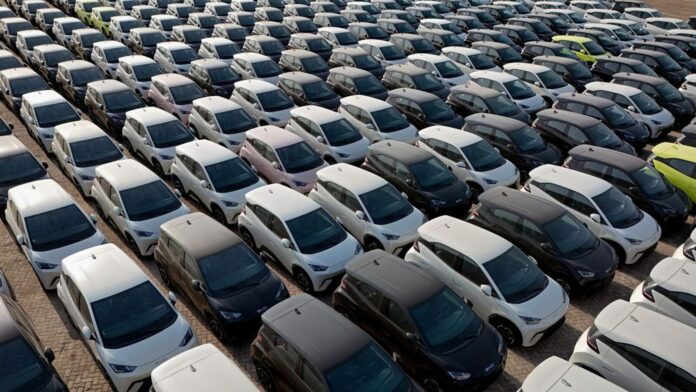Industrial overcapacity has flared up in recent months. There isn’t enough global demand to absorb all the lithium batteries, solar modules or steel that Chinese factories can produce. But this is happening at the painful expense of corporate profits.
More than half of industry supply in solar, EV, steel, and construction machinery isn’t making money, a sharp deterioration from a year earlier, according to Goldman Sachs Group Inc.
Even those producing consumer staples are not spared. Fresh milk, for instance, is caught in its longest price slump in 14 years, exacerbating a deflationary gloom that’s enveloping the economy.
We’ve been here before. China went through an extended producers’ deflation between 2012 and 2016, caused by the same problem. As the economy slowed, the utilization rate in the steel and coal industries contracted from 79% and 90% in 2010 to 70% and 65% in 2015, according to the International Monetary Fund.
Back then, excess capacity was also an international issue. About half of the anti-dumping and anti-subsidy investigations against China in 2016 were related to steel.
President Xi Jinping’s solution then was a supply-side reform that aimed to rein in production. Starting in 2015, the government closed factories and deployed 100 billion yuan ($14 billion) for severance pay to steel and coal workers. It was a success.
By 2017, deflation was gone, and some big state-owned enterprises, such as Aluminum Corporation of China Ltd., swung to profit. So it’s only natural that some industry insiders are urging the government to tackle supply again. But there are at least three reasons to believe why that won’t work this time.
Firstly, the government has less sway in sectors where overcapacity is the most acute. If steel, coal and, to a lesser extent, aluminum were the big headaches a decade ago, the international focus this time is on lithium batteries, solar and EVs.
Unfortunately, unlike steel, where roughly half of the producers are state-owned, these new economy sectors are largely dominated by private businesses. The government can’t really tell entrepreneurs what to do, unless Xi is prepared to return to the old days of a command economy.
Secondly, some industry leaders might see overcapacity as an advantage, in that it will force weaker ones to exit more quickly, leaving the survivors with a brighter future and fatter profits.
Take lithium batteries, for instance. Contemporary Amperex Technology Co. is the biggest manufacturer. Contrary to its peers, CATL’s profit margin has been on the rise despite falling battery prices. Scale and good cost control are helping.
In EV production, BYD Co. is China’s largest manufacturer. One may argue that price cuts jump-started its sales. In the second quarter, the company sold 426,000 units, putting it within striking distance of Tesla Inc., the world’s biggest EV seller.
“Competition is the rule of nature” that businesses must embrace, chairman Wang Chuan-Fu said in early June, when his peers complained bitterly about oversupply.
Thirdly, Xi’s 2015 supply-side reform was a bit misleading in name because a major component ended up boosting demand—the other side of the equation.
For the shantytown redevelopment program, the government bought old homes and relocated families, especially in smaller cities, and revamped these areas with new infrastructure spending. That explained 58% of improvement in steel prices, versus capacity cut’s 42%, according to IMF estimates.
This time around, stimulating demand is a lot harder. Much of it is overseas. Last year, exports accounted for 37%, 42% and 19% of China’s battery, solar and EV production, respectively, according to Goldman.
To help its manufacturers, the government could only speed up EV adoption at home with more cash subsidies. Unfortunately, that incremental gain in the domestic market can be easily eroded by worsening geopolitical tensions between China and the West.
These factors perhaps explain why top policymakers have not come up with concrete actions even though they are clearly worried about the industrial oversupply and its impact on corporate profits as well as the broader economy.
As such, China’s excess capacity problem will have to fester until even its industry leaders call it quits. That may be some years away. ©bloomberg
#Chinas #industrial #overcapacity #problem #harder #address #time
